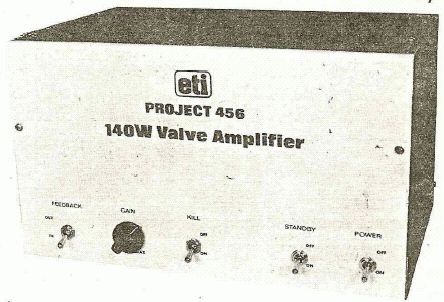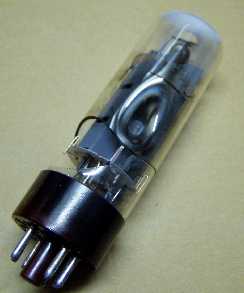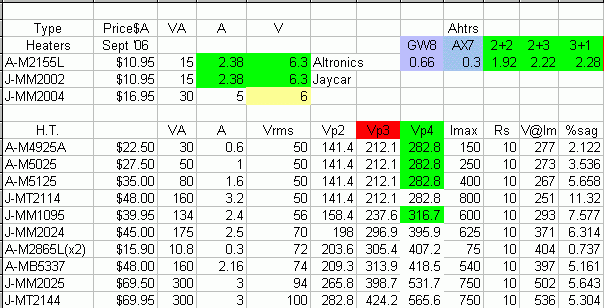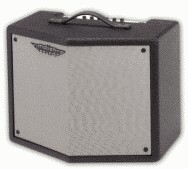http://www.ozvalveamps.org/eti.html | Created: 17/06/08 | Last update:
22:09 25/10/09
<<< OzValveAmps
|
ETI
Electronics Today International
After decades of being a one horse race through the valve era, the advent of the silicon revolution led to a small explosion in the number of electronics magazines published in Australia.
Today we are back to only one survivor, Silicon Chip. But for a time the dominance of Electronics Australia (previously Radio, Television & Hobbies, before that just Radio & Hobbies) which had been competing only with more expensive imports like Wireless World, Practical Electronics, and (the always excellent) Elektor, was suddenly challenged by a number of professional local upstarts.
There were even some subcription-only mags. Australian Experimenters Bulletin was an intense little photocopied 'zine, long before the genré, which arrived irregularly in a stapled brown paper bag from the wilds of Tassie; and there was 6-Up for VHF Radio Hams edited by Roger Harrison.
After a couple of years 6-Up had done its dash, and soon Roger turned up on the newsstands as the editor of ETI - Electronics Today International.
Currently (Sept '09) the domestic field has been reduced to a single magazine, Silicon Chip, and this is not a healthy situation.
Contains:
Paleface Minor
New: 25/10/09
by Dave Bradshaw, ETI 1993
The Electronics Today International "Paleface Minor" valve amp by Dave Bradshaw was published in three installments, in 1993 (months unknown).
15 watts from a pair of EL84/6BQ5's in fixed bias, NFB with Presence control, cathode-coupled PI, all triode preamp with Fender 3-knob tonestack, featuring cathode-follower Fx loop output.
- Pt1
- p1 (p52) Introduction
- p2 valve basics
- p3 valve stage basics, triodes
- p4 output valves, pentodes
- p5 experimental preamp stages (incl. PCB's)
- p6 experimental parts list
- Pt2
- p54 preamp circuit
- p55 PI/power output circuit, power supply
- p56 alternative power supply
- p57 preamp operation
- p58 power amp operation
- p59 power supply operation
- Pt3
- p32 chosing speakers, components
- p33 PCB's and assembly
- p34 assembly
- p35 power supply PCB, commissioning
- p36 cabinet, voltages
- p37 wiring, controls, mains
- p38 parts list

Download scans of the complete article. Caution: 3.4Mb zip.
Source: Peter Hutchison
Project 456 - Rocker
New: 17/5/08

In their May 1980 issue the now defunct Electronics Today International magazine produced a design by Phil Wait and Ron Keeley for a very serious valve amplifier using four 6CA7/EL34's to produce a claimed 140 watts. The authors credit several influences, in particular John Burnett of Lenard fame.
Andrew Neale of Neale Amplifiers has been kind enough to send the entire ETI article as a PDF, but since it runs to some 6 megs we have abstracted the circuit in two parts.
Andrew says that this was the first amp he built, and he built a pair as a Hi-Fi. Given the 750V HT he is not sure if it was brave or foolish, but he's still here to tell the tail. It's certainly not one I suggest for a first project.
At 12 I aquired a console radio with two 2A3's driven by an 80 rectifier. The reccy lit up a nice blue colour, but quickly got red-hot, and the set wouldn't pick up Radio Luxumburg. After a quick trip down to the local radio shop, a conflab and the extraction of most of my pocket-money for a bulbous bottle that didn't glow blue-then-red, the set threw forth Chuck Berry and Jerry Lee with “magnificent tone”.
I now know (no voltmeter then) the HT in these sets is around 550V! But I had been primed in Camm's Beginners Guide to Radio with its cautions about high voltage because battery valve sets used significant LT's like bell-cells that would light up a short, to HT's, series 22V layer-batteries, and monster multi-tapped 250V D-cell packs that once put me on my back.
But with a few mods, this project is still basiclly do-able today. We'll get back to that idea below.

Circuit part 1, part 2
This amp is quite minimalist with only a gain control and four switches on the front panel, mains power, standby (switching both the 750V main HT and 400V screen supply), “kill” which shunts the signal path, and a feedback switch to allow operation with or without negative feedback. No EQ or tonestack at all, not so much as a top-cut control. Jes' big boots and a very hairy chest.
Physically there are lots of ways you can build an amp, and in typical ETI style they built a steel cube that looks more like something out of a Ham shack than a guitar amp. Functional it may be, but pretty it 'ain't.
Having witnessed a number of 6CA7's expire in spectacular fashion...


... I have serious reservations about pushing them to their limits and would be looking to KT88's for this sort of power level. But maybe I'm just an old conservative who doesn't like to be upstaged by his gear in the middle of a show.
Source: Andrew Neale
Build the ETI456?
Sure you can get new valves and bases, but what about the trannies? Pure Unobtanium!
Well yeah ... but not un-substituable.
You don't need the tranny, you only need the voltages at the required currents. Similarly the output trannie; you only require an impedance-transformation at a power level.
Power Supply

On the bottom line is the 2144 torroid. Two of these give us 200V in at 3A, 600 watts. Should quadruple to around 800V at 750mA.

Or the 2025, 94Vac, 188 volts input, quad to 752 volts at 750mA, also 600 watts. These arrangements well exceed the requirements.
There is a small matter of the heaters, but we can assume it's at least covered by a brace of trusty 2155's.
Output Coupling
Required: plate-to-plate impedance “about 5500 ohms” at 140 watt continuous or “rms”-conditions.
What we can do?
There is a 100V-Line tranny that will do 5.33k into a 16-ohm load. It's rated at 40 watts (programme), but a quad of these in parallel will match the quad valves to a 16 ohm load.

One of the advantages of multiple trannies is that they are much more arrangable in a given space than the old-style iron-and-copper “cube” tranny - a bit like the Tardis, whichever way you turned it around it infuriatingly took up the same space. Multiple trannies are more flexable.
But really...?
Yes. But with 6CA7/EL34's? Well ... no thanks. I've never been mad on these. They are a real pentode in that they have an actual screen grid, g2. Some other valves, strictly speaking power-tetrodes, use electron-beam-forming plates, and are sometimes called “beam” tubes. Like the modern 6L6.
To my mind these have several advantages for a gigging amplifier, the main one being that beam tubes are much more robust, there is better spacing between anode and glass and the more moderate voltages are less prone to flashover. Another thing I like about 6L6's is their lighter heater current requirement at 0.9A each, against 1.5A each for 6CA7's.





